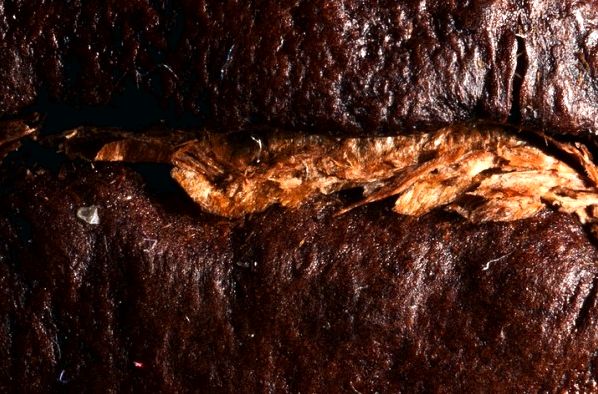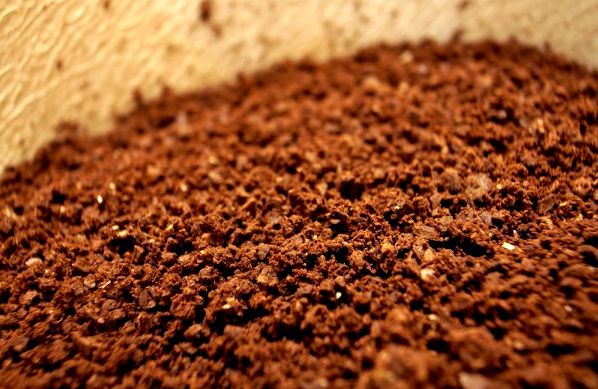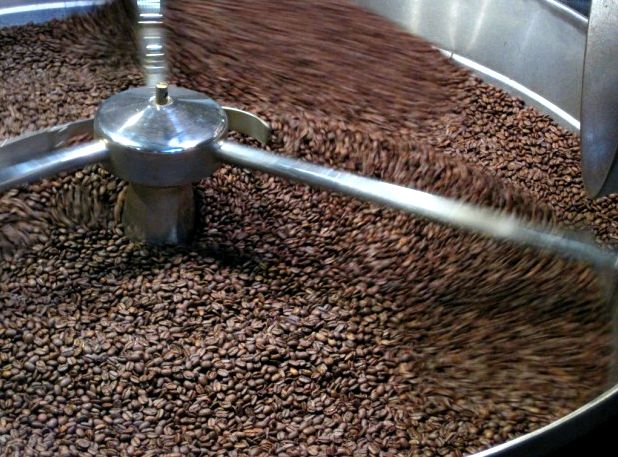Navigation article:

Acrylamide develops naturally within the coffee roasting process. Creative Commons photo by John Lodder.
The U.S. Fda yesterday released someone warning on acrylamide, a naturally a compound present in cooked foods — including coffee — we know of to result in cancer in creatures.
The warning was already selected up by numerous mainstream sources, that have casually reported coffee among the offending foods, although it’s important to note immediately that acrylamide cause within the roasting process is dramatically reduced after ground coffee is made. Regardless of this fact, a little consumer uproar will certainly be here, now is really as good a period just like any to examine what we should learn about acrylamide.
Caffeine compound was initially discovered by Swedish scientists in 2002, even though it is broadly thought to happen to be gift for as lengthy as humans happen to be baking, frying and roasting foods. Most frequently present in plant-based products, it develops when foods containing sugar as well as an amino acidity known as asparagine are cooked at high temperatures. In animal testing since its initial discovery, high amounts of acrylamide have been discovered to result in tumors along with a high incidence of cancer.
And its latest warning, the Food and drug administration is the very first time assembling a draft document for food producers (within this situation, coffee roasters) on acrylamide in foods. The document is presently within the comment period.
Inside a 2011 story in Roast Magazine highlighting the possibility results of Califonia’s Proposition 65 around the coffee industry, National Coffee Association President Robert Nelson provided probably the most comprehensive summary of acrylamide in coffee up to now, writing:
For coffee, the problem of acrylamide arises within the roasting process. As espresso beans are roasted, natural sugars and moisture let the desirable browning process, which chemically creates some acrylamide. The precise mechanisms of acrylamide’s formation in coffee may involve asparagine along with other possible pathways. However, the greatest degree of the compound occurs in a roasting level too light for consumer preferences, and starts to degrade considerably during further roasting. Completed roasting leaves only a small fraction of the initial acrylamide levels within the bean. Furthermore, there’s hardly any acrylamide left in made coffee because it is consumed.
Actually, the greatest levels discovered by Food and drug administration researchers have been in store-bought ground coffees (The Food and drug administration compiled a summary of acrylamide test recent results for probably the most popular store-bought and made coffees — mainly instant — within the U.S).
Nelson continues by thinking about what coffee roasters can perform to lessen or eliminate the existence of acrylamide in coffee. Regrettably, the reply is most likely hardly any:
Other products, for example fries, chips, cereals and crackers, have experienced some success in lessening acrylamide levels by altering cooking processes and component profiles. But no minimization methods have proven workable in lessening the amount created during coffee roasting despite strong research efforts. Roasting coffee more dark, for example, makes taste and aroma unpalatable to consumers. Other approaches, for example steam roasting, haven’t proven any significant decrease in acrylamide levels in finished products. However, jobs are arrived on the discovering that acrylamide seems to degrade when roasted coffee is stored with time. Because which impacts freshness, though, it might not be a workable solution.
Read Nelson’s full story on Prop 65 and acrylamide here.
Nick Brown
Nick Brown may be the editor of Daily Coffee News by Roast Magazine. Feedback and story ideas are welcome at writer@dailycoffeenews.com.
- Industry
- U . s . States
Tags: acrylamide, chemistry, National Coffee Association, Robert Nelson, science
- Click to talk about on Facebook (Opens in new window)
- Click to talk about on Twitter (Opens in new window)
- Click to talk about on the internet+ (Opens in new window)
- Click to talk about on LinkedIn (Opens in new window)
- Click to talk about on Pinterest (Opens in new window)
Earlier Publish
Newer Publish

Related Tales
 European Food Safety Authority Tackling Acrylamide, Seeking Public Consultation This summer 2, 2014
European Food Safety Authority Tackling Acrylamide, Seeking Public Consultation This summer 2, 2014  Fraudulent Fillers in Coffee Revisited: The Coffee Fights Back August 26, 2014
Fraudulent Fillers in Coffee Revisited: The Coffee Fights Back August 26, 2014  The way the FDA’s Revised Menu Labeling Rule May Affect Coffee Houses November 25, 2014
The way the FDA’s Revised Menu Labeling Rule May Affect Coffee Houses November 25, 2014  Watchdog Piece Suggests Toxic Compound Diacetyl May Pose Risk to Roasters’ Health June 23, 2015
Watchdog Piece Suggests Toxic Compound Diacetyl May Pose Risk to Roasters’ Health June 23, 2015  The Most Recent on Diacetyl and Roasters’ Work-related Health August 19, 2015
The Most Recent on Diacetyl and Roasters’ Work-related Health August 19, 2015  Coffee Compound GCA May Curb Weight problems, But Don’t Forget Get Transported Away, Researchers Say November 12, 2014
Coffee Compound GCA May Curb Weight problems, But Don’t Forget Get Transported Away, Researchers Say November 12, 2014

Comment
5 Comments
Bruce Stewart
Feb 20, 2014 10:10 pm
Would you give some levels? So how exactly does coffee match up against a bag of poker chips or perhaps a serving of fried potatoes? Will a paper filter affect levels?
Reply
James Mort
August 18, 2015 4:50 pm
There is a Food and drug administration list known as “Survey Data on Acrylamide in Food: Individual Food Products” using the link here: http://www.food and drug administration.gov/Food/FoodborneIllnessContaminants/ChemicalContaminants/ucm053549.htm
Reply
Mark
September 25, 2015 2:31 am
The main reason acrylamide is ‘reduced on brewing’ happens because it infises direct in to the drink. Your article is misleading
Reply
xor
December 14, 2016 3:24 am
“The chemical compound was initially discovered by Swedish scientists in 2002”
It’s existed because the early 1900s as well as in use within the 1950s so somebody didn’t do proper research from you
Reply
Lynn Frumkin
Feb 26, 2017 6:49 pm
This really is unacceptable! I have not so far, seen a “warning for use of coffee” because of the chemical acrylamide! We question why everybody is sick with cancers! Where’s OUR Food and drug administration???? How dare they permit products hitting our markets! They aren’t doing their job!! The coffee I simply found an alert on, is organic! That do we trust??? I’m tossing it away! Exist coffees that do not produce this chemical through roasting? Which brands? Exist warnings on every box of coffee? We ought to begin being bold such things as this that matter and harm human health as opposed to the a lot of things we spend our time dwelling on.
Reply
Leave an answer Cancel reply
Your current email address won’t be printed. Needed fields are marked *
Comment
Name *
Email *
Website
Current ye@r *
Leave seo empty
Inform me of follow-up comments by email.
Inform me of recent posts by email.

Resourse: http://dailycoffeenews.com/2013/11/15/acrylamide-in-coffee-what-roasters-should-know/
